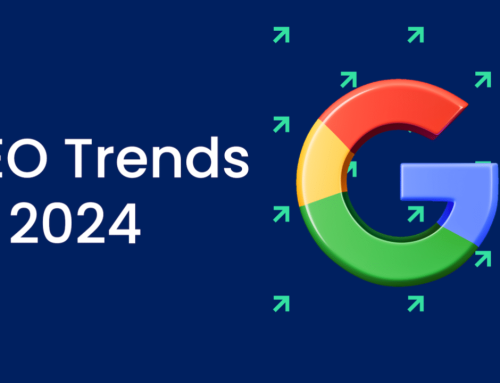Here’s a question we get a lot: what is Google E-E-A-T, and how does it fit into my SEO strategy?
E-E-A-T, which stands for Experience, Expertise, Authoritativeness, and Trustworthiness, is a key factor in Google Search Quality Rater Guidelines. Originally just E-A-T (the extra “E” for experience is a more recent addition), these four qualifications are one of the ways Google determines whether content is high in quality – and thus worthy of ranking high up in search engine results pages.
If you can master Google E-E-A-T guidelines, you’ll find yourself one step closer to those valuable top spots. It’s no wonder then that “what is Google E-E-A-T” is the question on so many minds or that you need to nail it if you want to succeed with content marketing.
Below, we’re tackling all the basics you need to know about this important concept, including a more comprehensive look at the E-E-A-T meaning and some of our top tips for checking off all the right boxes with your content.
What is E-E-A-T?
Google E-E-A-T is an acronym that tells us how Google evaluates and ranks web content on a human-to-human scale.
Broken down into its component parts, it looks something like this:
- Experience – Backing up content with first-hand encounters and real-life examples
- Expertise – Demonstrating deep knowledge of the subject
- Authoritativeness – Establishing the authority of the content creator
- Trustworthiness – The accuracy and reliability of the information provided and the site it’s published on
Google E-E-A-T guidelines are integral to SEO since the higher the proven page quality, the higher the ranking. But unlike the search results Google algorithm, E-E-A-T isn’t the work of web crawlers and automatic processes. Instead, real human quality raters are behind the scenes, evaluating content on a piecemeal basis to see how well it adheres to the standards set out above.
It’s worth noting that E-E-A-T isn’t a direct ranking factor. It is, however, a major determinant of overall page quality, which in turn impacts where you end up in Google search.
Ultimately, the goal of Google quality raters isn’t to boost individual pieces of content – it’s to boost the trust and credibility of Google itself versus other search engines. But meet their expectations as a content creator and publisher, and you’re almost guaranteed to see an SEO boost in return.
Google E-E-A-T Levels
Dig a bit deeper into the E-E-A-T meaning and you’ll come across the concept of E-E-A-T levels.
According to Google Quality Rater guidelines, there are four levels of E-E-A-T that content can achieve: “lowest,” “lacking,” “high level,” and “very high level.”
Content in the “lowest” level tends to be spammy and inaccurate, with the potential to cause real harm to readers. On the opposite end of the spectrum is “very high level” content, which demonstrates exceptionally high author credibility and subject matter expertise.
Context is key to E-E-A-T levels. Having a quality rater rank your content as “very high level” requires an alignment of content and authority with the specific subject matter and publication on an established, reputable, and content-relevant site.
How to Meet Google E-E-A-T Guidelines
We’ve tackled what Google E-E-A-T is, so now let’s move on to the next most important question: how do you demonstrate it?
Regarding search engines, Google is particularly tight-lipped about what brands and publishers need to do to rank high. That can be frustrating, but it’s for good reason since the more everyone knows about achieving a given ranking factor, the more likely it is that bad actors will try to game the system.
Of course, as part of our professional SEO services, we’ve made it our mission to figure out how to ace Google E-E-A-T guidelines, and we’ve developed some tried-and-true practices to ensure you impress a quality rater looking at your site. These are based in part on Stanford Web Credibility Research, which is a great resource for anyone wanting insight into general credibility ranking factors.
To showcase “experience” – Content should be written by a real human, and never AI. As much as possible, choose a content creator with real-life experience in the subject matter, or include direct quotes from someone with experience and insight to share. Then, make it clear to the reader that there’s real experience backing up the content, such as by including author information or highlighting brand acuity.
To showcase “expertise” – Providing clear author credentials can be useful for showing expertise, but demonstrating deep subject matter knowledge within your content is even more essential. Be sure to publish verifiable and accurate information and add value to the conversation beyond what readers can already find on search engines.
To showcase “authoritativeness” – Where content is published is a relevant E-E-A-T ranking factor just as much as the quality of the content itself. We see this in particular in authoritativeness, which dictates that your site – and your brand’s entire digital profile – should be both positive and professional. Achieve this by going beyond “owned” media to establish authority via a more authoritative source. Utilize guest posts and other off-page efforts, and consider investing in link-building services to ensure strong connections between your site and other reputable publications.
To showcase “trustworthiness” – Search engines prioritize content from high-trust sites, which is true for Google E-E-A-T guidelines, too. The E-E-A pieces of the puzzle will already go a long way toward helping you build a reliable and respected web presence. From there, take it a step further by focusing on the user-friendliness of your site, minimizing promotional content, and staying on top of back-end technical updates.
Quick SEO Tips for Achieving High-Level E-E-A-T
You want search engines to work for you, not the other way around. To do that, you need to focus on putting out consistently high-quality content that meets or exceeds Google E-E-A-T guidelines whenever possible. After all, what is Google E-E-A-T if not a helpful reminder that we should all be working toward credible, value-driven content on the web?
As you work to enhance content and page quality, here are some helpful best practices you should be sure to follow:
- Maintain technical SEO health (for example, fix any broken pages or links, ensure fast load times, and look for and address any crawling or indexing errors)
- Improve page and user experience factors like site functionality and ease of contact
- Regularly update content to ensure links, information, and stats are up to date
- Create topical clusters to demonstrate subject matter expertise
- Utilize various content types, including blogs, videos, and podcasts
- Engage experts and have them create or contribute to content
- Encourage and share user reviews
These and other practices get to the heart of what a Google Quality Rater is looking for and will serve you well for meeting E-E-A-T guidelines and putting out high-quality content that converts.
In Need of More SEO Expertise?
Try to think of your web users like offline customers as you work to build trust and credibility, and use frameworks like E-E-A-T to guide those efforts. Adhering to Google E-E-A-T guidelines can only help your SEO content strategy, and it’s worth putting in the time and effort to show Google (and your audience) why they should be valuing your site over your competitors.
We’re your dedicated partners in meeting the qualifications and expectations of leading search engines. Browse our site to learn about our on- and off-page SEO services, and get in touch today for a free SEO marketing proposal.

